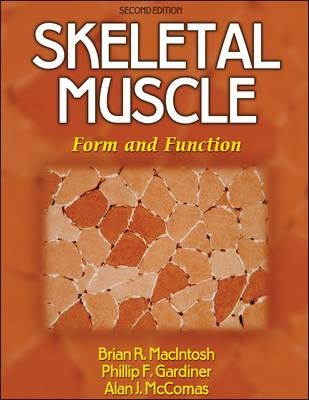
Skeletal Muscle
Human Kinetics Publishers (Verlag)
978-0-7360-4517-9 (ISBN)
- Titel ist leider vergriffen;
keine Neuauflage - Artikel merken
Brian MacIntosh is at the cutting edge of research in skeletal muscle and has published more than 50 papers and numerous book chapters in muscle and exercise physiology. He has been teaching undergraduate and graduate courses in these areas for 25 years and is a member of the American College of Sports Medicine. Phillip Gardiner is a former president of the Canadian Society for Exercise Physiology and previous co-editor of the Canadian Journal of Applied Physiology. He has published extensively in the area of neuromuscular adaptations and authored the book Neuromuscular Aspects of Physical Activity, also published by Human Kinetics. Alan McComas is emeritus professor of medicine at McMaster University in Hamilton, Ontario, Canada. He has more than 40 years of research experience in nerve and muscle.
Part I: Structure and Development; Chapter 1. Muscle Architecture and Muscle Fiber Anatomy; Chapter 2. The Motoneuron; Chapter 3. The Neuromuscular Junction; Chapter 4. Muscle Receptors; Chapter 5. Muscle Formation; Chapter 6. Development of Muscle Innervation; Part II: Putting Muscles to Work; Chapter 7. Ion Channels, Pumps, and Binding Proteins; Chapter 8. Axoplesmic Transport; Chapter 9. Resting and Action Potentials; Chapter 10. Neuromuscular Transmission; Chapter 11. Muscle Contraction; Chapter 12. Motor Units; Chapter 13. Motor Unit Recruitment; Chapter 14. Muscle Metabolism; Part III: The Adaptable Neuromuscular System; Chapter 15. Fatigue; Chapter 16. Loss of Muscle Innervation; Chapter 17. Recovery of Muscle Innervation; Chapter 18. Trophism; Chapter 19. Disuse; Chapter 20. Muscle Training; Chapter 21. Injury and Repair; Chapter 22. Aging Muscles Become Smaller and Weaker.
| Erscheint lt. Verlag | 1.9.2005 |
|---|---|
| Zusatzinfo | 201 black & white illustrations, 31 black & white halftones |
| Verlagsort | Champaign |
| Sprache | englisch |
| Maße | 216 x 279 mm |
| Themenwelt | Studium ► 1. Studienabschnitt (Vorklinik) ► Physiologie |
| ISBN-10 | 0-7360-4517-1 / 0736045171 |
| ISBN-13 | 978-0-7360-4517-9 / 9780736045179 |
| Zustand | Neuware |
| Haben Sie eine Frage zum Produkt? |
aus dem Bereich


